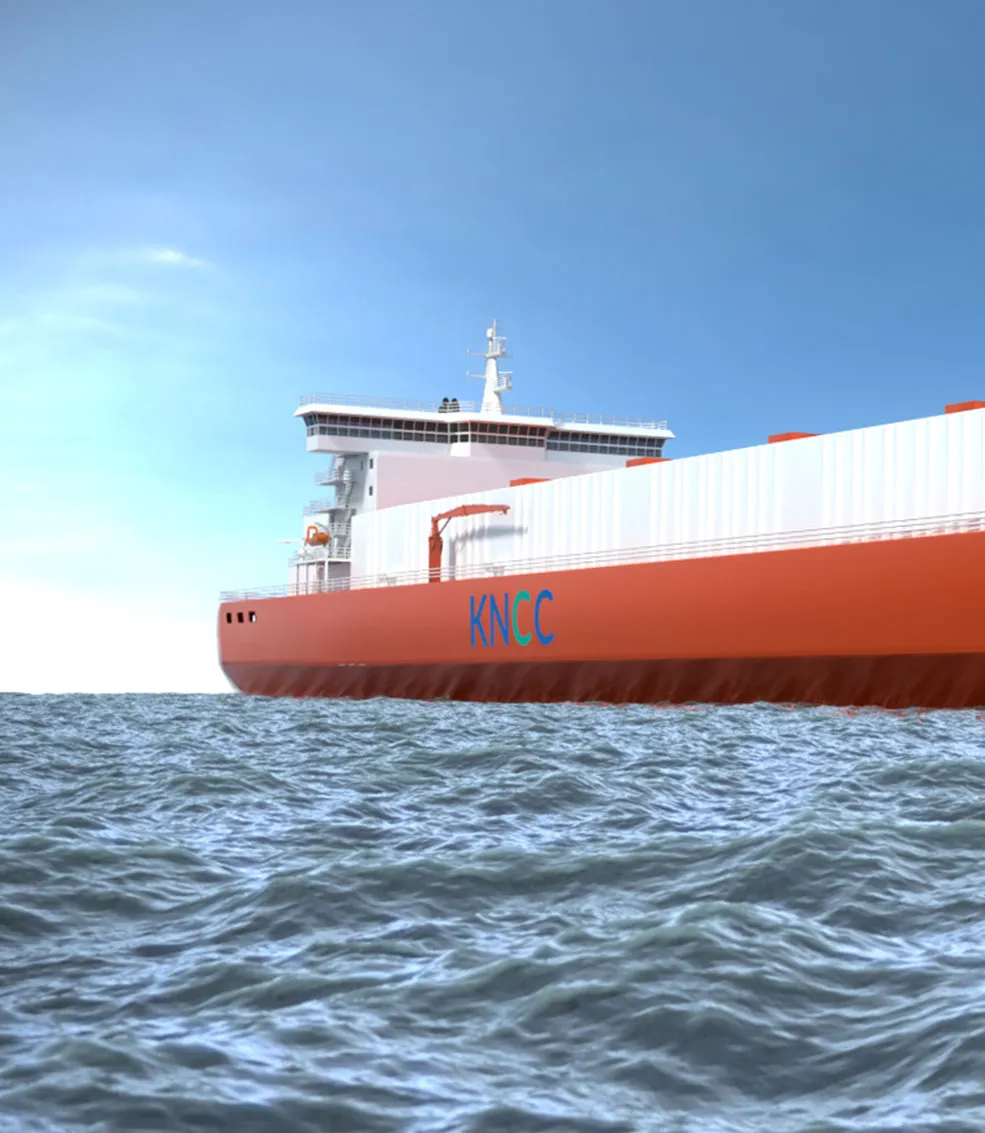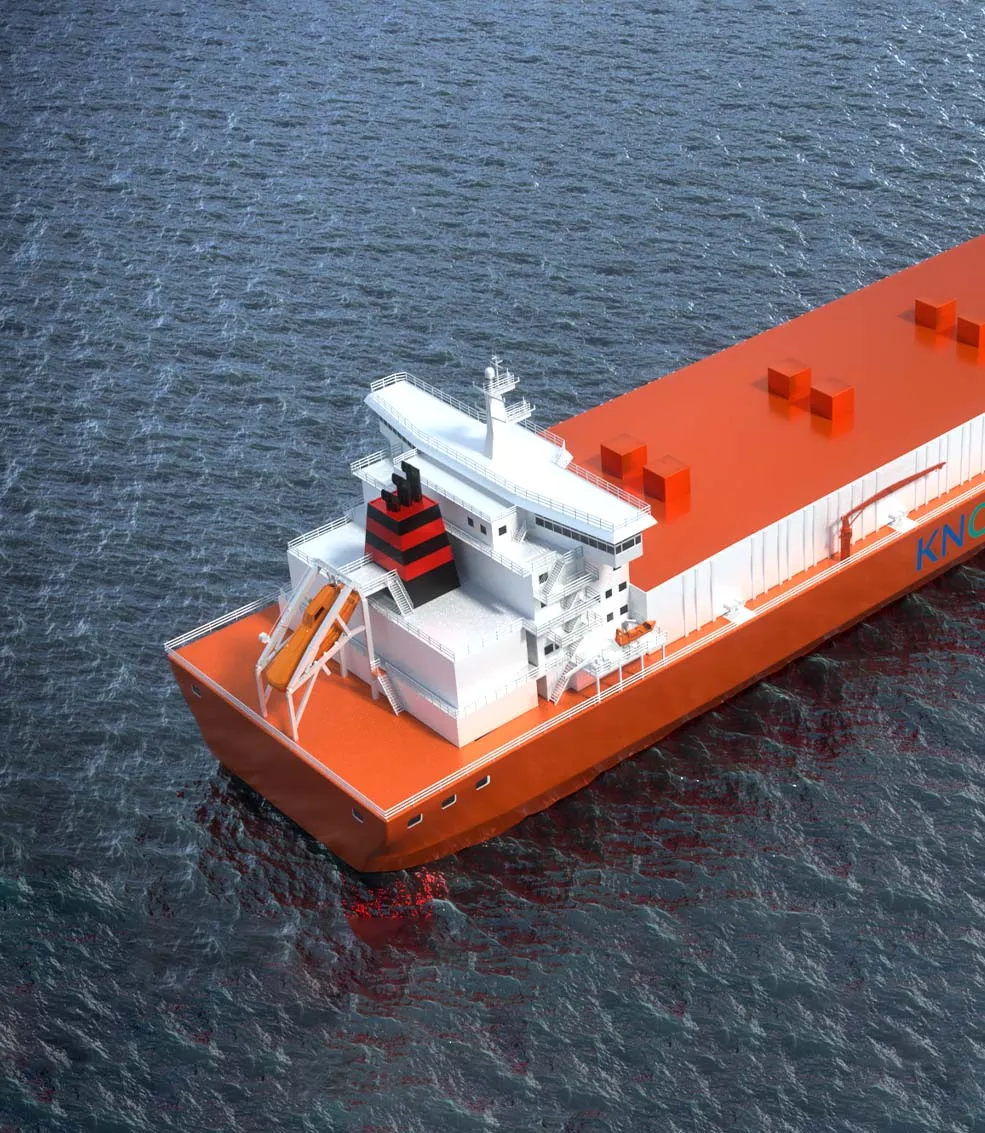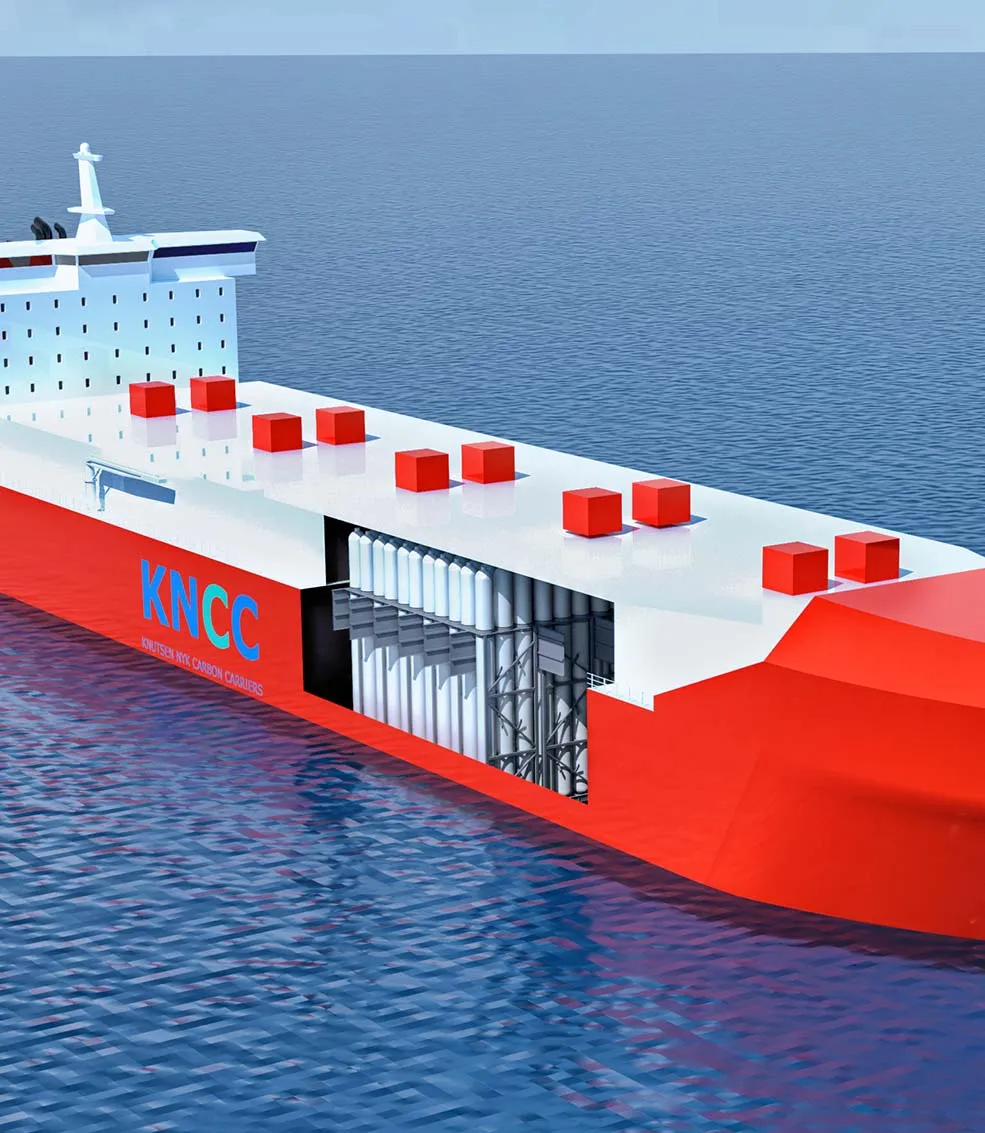DNV supports innovations in CO2 carrier design
Establishing a brand-new infrastructure for carbon capture and storage (CCS) is crucial on our pathway to net zero emissions. With CO2 shipping a key part of the value chain, DNV is adapting its rules for the expected new wave of liquid CO2 carriers and collaborating with industry partners to support bringing new technologies and solutions to the market.

Several hundred new ships needed in the next decades
Putting CO2 back underground where it came from, mostly in seabed reservoirs, is an optimal environmental solution. Northern Europe is currently leading the way with the Northern Lights joint venture developing the infrastructure from capture to storage. The government-supported Longship project, comprising capture facilities in the eastern part of Norway, will be the first end-to-end pilot to utilize that infrastructure. “Around 260 million tonnes of CO2 have been injected and stored on the Norwegian Continental Shelf since the mid-1990s as part of enhanced oil recovery (EOR) processes to maximize oil and gas extraction, so we have a lot of experience already,” says Erik Mathias Sørhaug, Business Development Leader, DNV Maritime Advisory.
“We need to rapidly deploy and scale the entire value chain from capture, storage and transport to offloading and injection for CCS to have a meaningful impact. A large proportion of the total volume, at least in the initial stages, will need to be transported by ship, making marine transport a key holistic component,” he adds. “We foresee a completely new ship segment developing on the back of increased transport demand for liquid CO2, with potentially several hundred ships coming onstream towards 2050.”

Different pressure regimes can increase CO2 cargo capacity
But different CCS applications and levels of scale may require liquid CO2 to be shipped at different pressure levels, requiring the development of low-, medium- and high-pressure tank solutions. Today CO2 is transported for commercial use in northern Europe using a handful of small ships at medium pressure. The planned Northern Lights ships will be medium pressure (15 bar at −28°C) as well, and able to carry LPG if necessary. The technology is operationally well known, but has limits in terms of tank size and materials.
Both low- and high-pressure solutions can potentially increase cargo capacity, but are novel technologies presenting new risks and challenges in ship design, construction and operations. These include tank size and optimal arrangement, material selection, condition of the captured CO2, holding time and the need for re-liquefaction, the corrosive effects of impurities in the cargo, safety considerations, reliable monitoring systems and achieving the optimal balance between cost and complexity.

High pressure technology requires less energy
“A holistic approach is decisive for choosing the most effective solution. Cost viability boils down to distance to the final storage site, the amount of CO2 to be transported (per load and on an annual basis) and the concept for offloading and injection,” says Sørhaug. Here the industry needs a clearer picture to make sound business decisions.
High-pressure (35–45 bar) technology is an interesting alternative to low- and medium-pressure solutions when looking at the cost for the whole value chain, as the ambient temperature conditions (0–10°C) require less energy to cool the gas to a cryogenic level for loading, and reheating at the unloading point. The flexibility and scalability of the cargo containment systems potentially allows the construction of very large CO2 carriers of up to 80,000 cubic metres or even more.

KNCC forges ahead in high pressure
In the vanguard of high-pressure developments is Knutsen NYK Carbon Carriers (KNCC). DNV recently awarded the joint venture between Knutsen Group and NYK Group an Approval in Principle for its new PCO2 tank concept applying principles adopted from Knutsen’s proprietary pressurized natural gas (PNG) carrier solution developed 15 years ago to carry compressed natural gas (CNG).
The CO2 is stored in bundles of vertically stacked, small-diameter pressure cylinders instead of in large cylindrical tanks.
The small diameter mitigates the risk of pressure variations within the tubes, avoids dry-ice formation and eliminates the sloshing effects of liquid CO2 in part or fully loaded condition. KNCC believes the concept will result in significant cost savings versus cryogenic strategies.

Solving regulatory hurdles to realize the project
While low and medium pressure is handled within the current regulatory regime, the parameters for transporting CO2 under high pressure go somewhat outside the current IGC Code, which is the mandatory regulation for the bulk transport of all liquefied gases with vapour pressure above 2.8 bar absolute at 37.8°C. “When we began to consider the KNCC vessel design, it soon became clear that the solution was technically feasible, but there were some challenges to ensure it was permissible under the existing regulatory framework,” Johan Petter Tutturen, Business Development Manager CO2 carriers at DNV, says.

Moving forward with technical studies and risk assessments
High-pressure CO2 carriers will now be treated as gas carriers under the IGC Code. Both vessels and equipment will, to the greatest extent possible, be designed to comply with the code’s prescriptive requirements and the amended DNV Rules Part 5 Chapter 7 with class notation “Tankers for CO2”. “We consider the KNCC containment system adopted from Knutsen’s PNG carrier design to be of novel configuration in the IGC context. It will therefore need to be assessed under the provisions for containment systems of novel configuration,” Tutturen adds.
The requirements for the cylinder-type containment system as defined in the DNV rules Part 5 Chapter 8 for CNG tankers will be used as basis for the KNCC design, but with necessary modification to account for the carriage of liquid CO2 instead of natural gas. “This shows how DNV’s long-standing rules in sectors like CNG can be adapted to enable important new technologies. Next up is to optimize the vessel and containment system design with more detailed technical studies and risk assessments as part of the classification process,” says Tutturen.
KNCC CEO Anders Lepsøe applauds the ongoing close cooperation: “CCS has enormous potential to help decarbonize industry, and we’re proud to be leading innovations to scale up potential transport volumes. The validation offered by DNV rules and DNV’s world-class expertise in CO2 transport have been very valuable as we take the next steps with the PCO2 concept in this emerging segment. Contributing to reaching global environmental goals is essential for us and our owners, and we aim to become an integral part of the CCS value chain.”
KNCC is set to begin ambient liquid CO2 testing at a new lab in Norway in autumn 2022, with results demonstrating the feasibility of the technology expected in the second half of 2023.

DNV helps to identify and prove new business solutions
DNV is the ideal partner to advise on cost and implications for CO2 shipping, with ongoing projects and new rules in development. A fleet of three to four low-pressure CO2 shuttle carriers is envisaged for the Stella Maris CCS project where a dedicated floating injection unit (FIU) in the North Sea will receive the CO2, heat it up to around 150 barg and then inject it continuously into the injection well.
Low pressure increases the maximum cargo tank diameter, allowing around 6.300 cubic metres of liquid CO2 to be transported in each cargo tank, enabling larger ships with a total capacity of 50.000 m3 in each load.
DNV is providing expert input on the concept definition for project owners Altera Infrastructure and Hoegh LNG, including regulatory evaluation, environmental impact studies, power demand/dynamic positioning analysis and AiP of the shuttle tanker design, carbon collection, storage and offloading unit and the FIU.
“In terms of logistics we collaborate with the full scope of stakeholders through our Energy Systems business division to identify solutions that make sense financially and operationally,” Sørhaug says. Further key services include technology qualification of new cargo containment systems, guidance and support in the tender process for CO2 tankers, vessel classification, design support for specialized tanks, piping and refrigeration systems, and consequence analysis of CO2 leaks and dispersion using sophisticated computational fluid dynamics modelling.
Contact us
Contact us
- KNCC
View image copyright information
